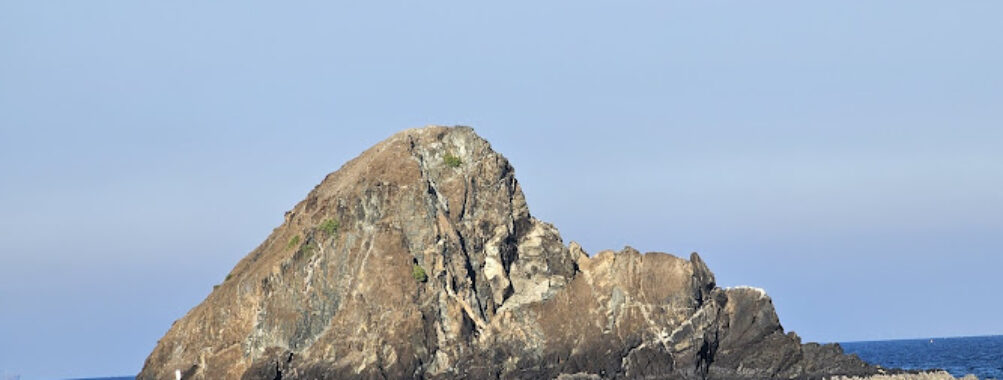
Dibba Rock
Table of Contents
Description
Dibba Rock is one of those rare gems that pulls you in with its raw, unfiltered charm. It’s not your typical tourist trap, but more a nature lover’s playground tucked away where the sea meets the sky in a pretty spectacular way. If you’re into diving or snorkeling, this spot is like a secret handshake among those in the know. The water is crystal clear, giving you an almost magical window into an underwater world teeming with life. Think colorful coral reefs that look like underwater gardens, and fish darting about like they own the place—clownfish, parrotfish, and even the occasional sea turtle making a cameo.
Now, don’t expect wheelchair ramps or easy access for everyone, because this place keeps it real with a bit of ruggedness. It’s a nature preserve, after all, so the landscape is preserved more for the critters and corals than for convenience. But that’s part of the charm, right? It’s a spot where you can feel like you’re discovering something untouched, a little slice of the ocean’s wild side.
Visitors often come back with stories about the sheer tranquility and the thrill of spotting marine life up close. It’s not just about the diving; it’s about the whole vibe—the salty breeze, the sun warming your skin, and the peacefulness that washes over you when you’re surrounded by such natural beauty. Sure, it’s not perfect, and some might find the access tricky or wish for more facilities, but if you’re the kind of traveler who values authenticity over polish, Dibba Rock hits the spot.
Key Features
- Clear, calm waters ideal for snorkeling and diving
- Rich marine biodiversity including clownfish, parrotfish, and sea turtles
- Protected nature preserve ensuring a pristine underwater environment
- Relatively untouched and less crowded compared to other diving spots
- Scenic views above water with rugged coastline and peaceful surroundings
- Perfect for both beginner snorkelers and experienced divers looking for adventure
- Lack of wheelchair accessibility reflecting its natural, undeveloped state
Best Time to Visit
Timing your visit to Dibba Rock can make all the difference between just a nice day out and an unforgettable underwater adventure. The best months tend to be from October through April when the weather is cooler and the sea is calm. During these months, the visibility underwater is at its peak, sometimes reaching over 20 meters, which is a dream for divers and snorkelers alike.
Summer months can get pretty hot and humid, and the water might get a bit choppier, which can make diving less enjoyable. Plus, the sun can be relentless, so unless you’re a sun-worshipper, it’s better to plan your trip in the shoulder seasons. Early mornings are also a sweet spot if you want to avoid crowds and catch the marine life at their most active.
How to Get There
Getting to Dibba Rock is part of the adventure. It’s not exactly a place you stumble upon by accident, which is why it feels special when you arrive. Most travelers reach it by boat from nearby coastal towns. If you’re staying in the region, local operators offer diving and snorkeling trips that include transport, gear, and sometimes even a guide who knows the best spots to explore.
Driving to the nearest launch point is straightforward if you have a rental car, but keep in mind that public transport options are limited. Once you’re on the water, the boat ride itself is a joy—fresh sea air, panoramic views, and the anticipation building as you get closer to the dive site. Just be sure to check the weather and sea conditions before heading out, because safety first!
Tips for Visiting
Here’s the deal: Dibba Rock isn’t your polished, all-inclusive resort experience. It’s more like a wild adventure that rewards those willing to put in a little effort and embrace the natural surroundings. So, pack light but smart—bring your own snorkeling gear if you have it, though rental options are usually available, and don’t forget reef-safe sunscreen. The last thing you want is to harm the very ecosystem you came to admire.
Wear sturdy water shoes for rocky shores and slippery spots, and maybe a hat and sunglasses for the boat ride. If you’re diving, make sure your certification is up to date and consider hiring a local guide—they know the currents, the best spots, and can help you spot marine life you might otherwise miss.
One thing I’ve learned from visiting places like this: patience pays off. Sometimes the best encounters happen when you slow down, float quietly, and just observe. And don’t rush—take a moment to appreciate the silence beneath the waves, it’s like entering another world. Oh, and if you’re prone to seasickness, pop some ginger or your preferred remedy before the boat ride.
Lastly, respect the environment. This is a protected area, so no touching the coral or disturbing the animals. Leave nothing but bubbles behind. If you do all that, Dibba Rock will reward you with memories that stick with you long after you dry off your fins.
Location
Places to Stay Near Dibba Rock
Find and Book a Tour
Explore More Travel Guides
No reviews found! Be the first to review!